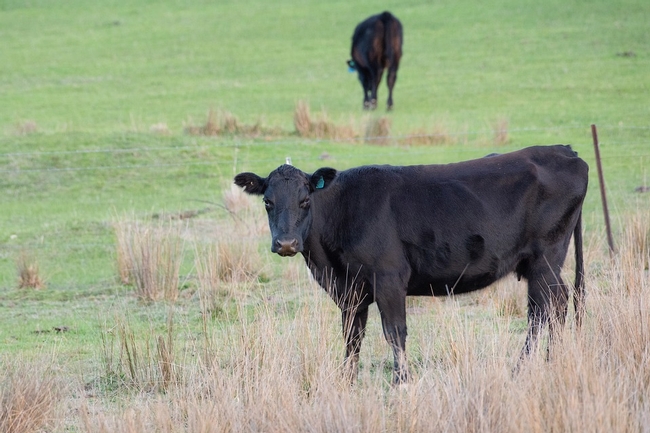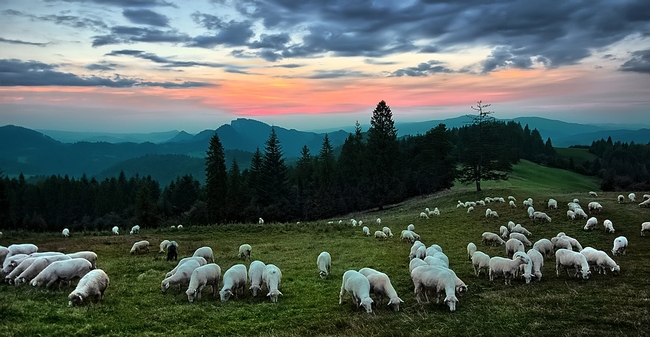Updated Sept 17, 2020 to add link. Visit: MatchGraze.com
As previously mentioned in the September 2018 issue of the Farm Bureau newsletter, the frequency, intensity, and size of wildfires in northern California have increased. This trend is alarming given that California's fire season is expected to become longer and start earlier. The fire season started in early June this year as Sonoma County experienced smoke from Sand Fire in Yolo County. To mitigate future fire, the County of Sonoma has adopted a new hazardous vegetation abatement ordinance which mandates that parcels of 5 acres or less must maintain defensible space around all buildings/structures and remove all vegetation that poses a fire risk. As policymakers in our communities and across the state continue to explore initiatives to prevent wildfire, the agricultural community can demonstrate real impacts in reducing fire fuel through managing existing vegetation on our working landscapes - forest and rangelands. We need to educate the public on the importance of managing these valuable landscapes using a multitude of tools, especially grazing. The extent to which the public understands fire risks and accepts the adoption of all potential tools for forest and rangeland health will increase the likelihood of potential collaborative management strategies imperative to community resiliency.
Grazing is a cost-effective vegetation management alternative that works best in cases where other options are impractical and financially ineffective. Specifically, targeted grazing can be more cost-effective on landscapes that are too steep, rocky, or remote for conventional vegetation management (like mowing or chemical treatment), or in the urban-wildland interface where burning is not an option. Targeted grazing is the application of a specific kind of livestock at a determined season, duration, and intensity to accomplish defined vegetation or landscape goals. This concept has been around for decades and has taken many names, including prescribed grazing and managed herbivory. The major difference between good grazing management and targeted grazing is that targeted grazing refocuses outputs of grazing from livestock production to vegetation and landscape enhancement. The concept of a target requires that one has a clear image on which to focus and then aims something (i.e., an arrow) at the target to accomplish the desired outcome. In the case of targeted grazing, the land manager must have a clear vision of the desired plant community and landscape, and the livestock manager must have the skill to aim livestock at the target to accomplish land management goals.
As mentioned in the June 2019 Farm Bureau newsletter (Quackenbush), sheep grazing is being applied on lands throughout the county to help reduce fire danger. Targeted grazing is a very different business model than simply grazing for livestock production. Effective targeted grazing focuses on impacting target vegetation at exactly the right time for specific landscape or vegetation goals. Traditional livestock production, on the other hand, focuses on putting weight on animals or increasing reproductive success. Traditional livestock operations generate income from the sale of animals and animal products; these operations focus on body condition and the nutritional status of the animals at specific production stages. Targeted grazers generate income from vegetation management services; these operations may accept a drop in body condition or reproductive success to achieve desired impacts to low-quality forage as long as this service is paid for. Both models can reduce fire fuels; no one model is better than the other.

Last month, UC Cooperative Extension and SRJC Agriculture and Natural Resources Department offered a grazing school at Shone Farm. Landowners and targeted grazers learned how to implement targeted grazing on local working landscapes. Participants gained knowledge on how to design a grazing program on their own managed lands or if they decided not to own animals, how to use this knowledge when hiring a targeted grazer. A neighborhood grazing partnership was created at the school along with new opportunities for targeted grazers.
Additionally, UC Cooperative Extension (UCCE) Sonoma/Marin, is creating a “Match.Graze” system which connects landowners, who have no animals, to targeted grazers, those that can bring their animals on property to perform vegetation management service. If your parcel (s) is/are greater than 50 acres, this system will be a great resource. While it is more cost-effective for target grazers to grazer larger parcels, those with smaller parcels in neighborhoods or communities can join together to have multiple parcels of varying sizes in the same geographic area receive vegetation management by the same grazer. If you want more information about the use of grazing, how to set resource goals for your rangelands, or help to find a grazer for your parcel, call the UCCE office at 707-565-2621 or complete this survey to help UCCE better meet your desire to manage vegetation to prevent future fires in Sonoma and Marin Counties. The survey can be found at www.ucanr.edu/rangeland.

